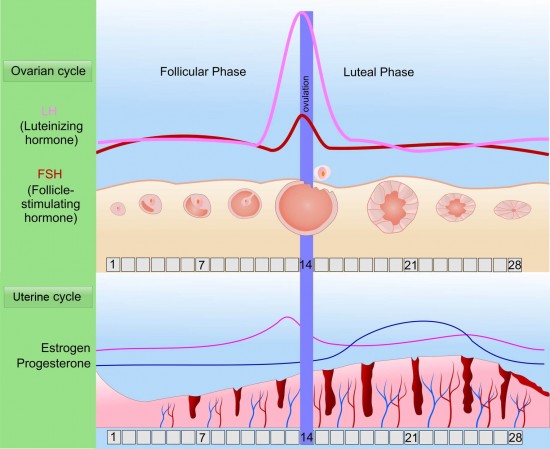
Ovulation Test Strips - How Do They Predict Ovulation?
If you are trying to get pregnant, you need to know when you will be ovulating. One of the easiest ways of figure out when you will be ovulating is to use ovulation test strips or OPKs (ovulation predictor kits), in trying to conceive speak. OPKs can help you pinpoint ovulation making it easier to plan when to have sex to get pregnant.

What is Ovulation?
Ovulation is when your ovaries release your egg into your reproductive system. One of two things will happen after you ovulate. You will either end up getting your period or, if you had sex at the right time, possibly getting pregnant. At the start of the menstrual cycle, your body starts producing follicle stimulating hormone (FSH). This hormone aids in the formation of a follicle on one of the ovaries, which contains and nurtures the ovum. Once the follicle has developed sufficiently, a surge of luteinizing hormone forces the follicle to burst and releases the egg into the fallopian tube. This is the exact moment of ovulation.How Do Ovulation Test Strips Work?
Ovulation predictor tests detect the increased LH in your urine. The tests have unique antibodies in the sensitive testing membrane that can detect the LH. When the ovulation test detects a certain level of LH in your urine, it will show a positive result. By identifying this sudden LH surge, ovulation tests help you predict, with high accuracy, exactly when you will ovulate. You will ovulate in 24 to 36 house after you get a positive ovulation test strips result.How to Use Ovulation Tests
Be sure to follow the directions carefully when using an ovulation test strip. You will need to collect your urine in a container and then dip the ovulation test into the urine. Midstream ovulation tests, with plastic handles, have to be placed directly in your urine stream. Both are equally accurate, and choosing between the two is just a matter of personal preference. The typical reaction time is five minutes. Each test has a control color line that signifies whether or not the ovulation test is working correctly. This control line provides a baseline by which to interpret the test line results.How Often and When Should I Take an Ovulation Test?
The best times to test are between 11 am and 3 pm and 5 pm and 10 pm. If you want to make sure that you catch your LH surge, you may want to test twice a day, once in the earlier time frame and the other in the later time frame. Be sure to check at the same time each day.A Positive Result on Ovulation Tests
You will most likely get two lines several days before an actual positive result is received. Two lines do NOT mean the test is positive. The test line has to be the same color or darker than the control line for a positive test interpretation. When you see this, you should be ovulating in about 24 to 36 hours later. Some people don't like the color guessing game and use ovulation tests that say yes or no to whether you are ovulating or not. There are digital ovulation tests that make it easier to figure out the results, but they typically cost quite a bit more.Timing Sex for Conception
When you get your positive result, it's time for you to make a baby making date with your partner! The three days after a positive result is the best time to have sex if you are trying to get pregnant. Don't worry if you have sex before the positive opk result. As long as you have sex during your fertile period, you still have a chance of getting pregnant.When Ovulation Test Strips May NOT Be Accurate
You need to realize that there are certain situations where you will not get accurate results with ovulation tests. If you are taking fertility medications, like Clomid, you may see positive test results even though you don't have an LH surge. If you have PCOS, you may get odd results due to elevated LH levels that some women get with PCOS. Medications that contain FSH, LH, or HCG, antibiotics that include tetracycline and hormonal methods of birth control can also cause inaccurate test results.
Tags:
Ovulation
Quick links
Search
Contact Us
Shipping Information
Helpful Info
Terms of Service
Privacy Policy
Do not sell my personal information
Contact us
About us
BabyHopes.com is a family owned and operated business, opened in January 2001. We have been serving the trying to conceive community for over 20 years.
